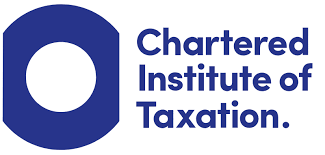EMI: A review of the essentials
Latha Rodgers provides a refresher of the qualifying conditions for enterprise management incentive share options and the tax benefits.
Unlike other HMRC approved share option schemes, enterprise management incentives (EMIs) can be tailored to each specific individual (e.g., for different performance conditions). They also do not need to be offered to every employee.
General requirements
EMI options must be granted for genuine commercial reasons to recruit or retain an employee. There is also an anti-avoidance requirement in that if the option is granted as part of a scheme or arrangement the main purpose of which is to avoid tax, the option does not qualify.
Employees can be granted up to £250,000 worth of shares. The value of the shares is based on the unrestricted market value (UMV) when the options are granted. The limit includes both EMI options and company share option plan (CSOP) grants. Once the £250,000 limit has been reached, no further options can be granted for three years, regardless of any earlier options being exercised.
The company can grant EMI options up to £3m. Again, this is the UMV of the shares and includes unexercised EMI options.
Qualifying conditions
Some of the company and individual conditions need only be met when the EMI options are granted, whereas others need to be met throughout the period from grant to exercise (this is explored later).
Company conditions
The company must meet all the following conditions:
- its gross assets must be less than £30m;
- it must be a stand-alone trading company or the holding company of a trading group;
- all its subsidiaries must be qualifying subsidiaries. The holding company must own 51% of a subsidiary. For a property managing subsidiary, the holding must be 91%;
- the EMI option must be granted in the holding company; and
- there must be less than 250 full-time equivalent employees.
Like other definitions of trading activities, rather than define ‘trade’ there is a list of excluded activities. The relevant legislation (ITEPA 2003, Sch 15, para 16) sets out the list of excluded activities, which include leasing, farming activities and property development.
Individual conditions
The individual must meet all the following conditions:
- be an employee of the company or group (directors can also qualify);
- meet the working time requirement; and
- does not have a material interest in the company or group.
Provided the individual either works at least 25 hours per week or 75% of their working time for the company (or group), the working time requirement is met. Part-time individuals can qualify if they meet the 75% of their working time test. Working time includes all employments and self-employment.
An individual has a material interest if they, together with their associates, hold more than 30% of the ordinary share capital of the company. Associates include the individual’s spouse, parent, children and the trustee of any settlements of which they or their associates are the settlor. Siblings, uncles, aunties, nieces and nephews are not associates. In determining whether the individual has more than 30%, shares under CSOP options are included – although other EMI options are ignored.
Critically, if the individual breaches the 30% material test after the EMI option has been granted, the unexercised EMI option is unaffected – this is because the individual met the material test at the date the EMI option was granted.
Disqualifying events
As mentioned previously, there are some conditions which the company and individual need to meet throughout. If they are not, these are called disqualifying events. They are:
- loss of independence;
- no longer meeting the trading requirement;
- changes to the EMI option terms;
- changes to the share capital;
- conversion of shares;
- no longer employed or a director;
- working time requirement no longer met; or
- the £250,000 limit is breached because a CSOP option has been granted.
If the EMI options are exercised within 90 days (subject to whether the EMI options automatically lapse under the terms of the EMI option agreement when the disqualifying event happens), any tax advantages are preserved.
If exercise takes place after 90 days, income tax charges (and potentially National Insurance contributions (NICs) charges) arise.
If the shares are readily convertible assets at the date the EMI option is exercised, NICs are due. Furthermore, PAYE is operated to collect both the income tax and NICs.
Notification and other requirements
The EMI option must be in writing and capable of being exercised within ten years of the date of the grant. This does not mean the EMI option automatically lapses after the tenth anniversary. Instead, if the option is exercised after this date, all the tax advantages are lost, resulting effectively in the individual having an unapproved share option.
The EMI option agreement must clearly state the following:
- grant date;
- maximum number of shares;
- exercise price;
- when and how the EMI options can be exercised;
- granted under the EMI provisions; and
- performance conditions (if applicable).
If the directors of the company agreed the UMV with HMRC, the EMI options must be granted within 90 days; if the EMI options are granted after this date, HMRC’s agreement is no longer valid.
For EMI options granted after 6 April 2024, the directors must notify HMRC of the grant on or before 6 July following the end of the tax year in which the EMI option was granted. Previously, notification had to take place within 92 days of the EMI option being granted.
Annual returns whilst the company has unexercised EMI options must be submitted by 6 July following the end of the tax years.
Taxation of EMI options
(a) Individual – Income and NICs tax charges
There are no tax charges on grant.
On exercise, tax charges only arise if the option was granted at a discount (i.e., the exercise price was lower than the actual market value (AMV) at grant). AMV is different from UMV, which is used for the £250,000 limit.
If there is a discount, income tax and NICs (if applicable) are payable based on the lower of the difference between the exercise price and AMV at grant and at exercise. Employer NICs liabilities may also be payable if the individual agreed to pay this.
If a disqualifying event has taken place and the EMI option was exercised after 90 days, income tax and NICs (if applicable) are payable on the difference between AMV before the disqualifying event happens and on exercise. In addition, if there was a discount, this is also taxable.
If the EMI option is exercised after ten years, the difference between the exercise price and the AMV at the date of exercise is subject to income tax and NICs.
(b) Individual – Capital gains tax charges
If the individual sells the shares at a profit, the chargeable gain is subject to capital gains tax. Business asset disposal relief applies if the shares were sold two or more years after the EMI options were granted.
(c) Corporation tax
The company is entitled to a corporation tax (CT) deduction when the EMI options are exercised. The CT deduction depends upon whether the EMI option is granted at a discount or not:
- No discount – the CT deduction is the difference between AMV when the EMI option is exercised and the price paid.
- Discount – the initial discount and the difference between AMV when exercised and the price paid.
Practical point
The directors of the company can apply to HMRC for advance assurance to confirm the company is a qualifying company. This is only necessary if there is an element of doubt over the trading activities carried out by the company or group.
I would recommend that the valuation is agreed with HMRC, as this provides certainty of whether the EMI option is granted at a discount or not.
Keep an eye on disqualifying events, such as if the shareholders are considering a sale and change in trading activities.
Remember annual reporting - even if no events took place during the tax year.




